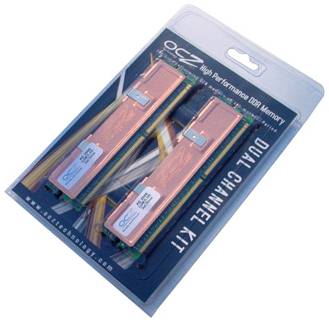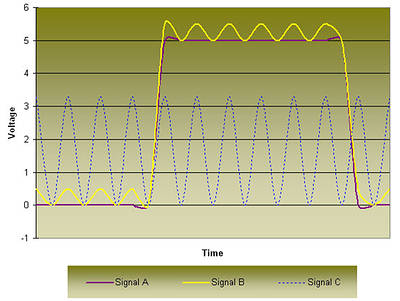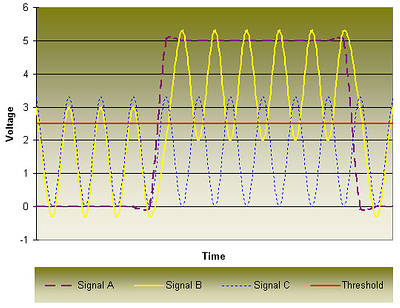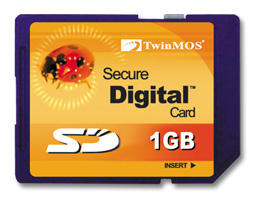 |
||
|
||
| ||
NVIDIA GoForce 3000, 4000 — more features for mobiles OCZ Technology announces 1GB unbuffered DDR400 SDRAM DIMM modules made using ULN2 technology SD/miniSD: announcements and prospects Guillemot/Hercules withdraws from the 3D graphics and LCD monitor market NVIDIA GoForce 3000, 4000 — more features for mobiles NVIDIA sounds louder and louder in the PDA and mobile market. As you might have guessed, I mean its new GoForce 3000 and GoForce 4000.
 To compare novelties with the previous models, namely GoForce 2100 and 2150, introduced late in September 2003, here´s a summary table:
The list of PDA and handset manufacturers that are going to use NVIDIA novelties include Dell, HP, Mitsubishi, Palm, Philips, Sharp, Siemens, Sony, Toshiba. Besides the features above, GoForce 4000 provides fast switching between the primary and secondary displays, supports 18-bit color, and also supports 30 fps video capture and playback in VGA resolution. The GPU is made using 0.15µm process and is encased into 168-pin BGA package (10x10mm). Its core requires 1.425-1.575V voltage, while I/O circuitry requires 1.71 to 3.6 V voltage.
OCZ Technology announces 1GB unbuffered DDR400 SDRAM DIMM modules made using ULN2 technology OCZ Technology officially announced the new 1GB unbuffered PC3200 (OCZ4001024PF) modules that will be shipped in 2GB memory kits (OCZ4002048PFDC-K). Each module in such kit has overclockers traditional aluminium heatsinks and, according to the company, at 2.6V operates at 3-3-3-7 timings. From other similar products these modules differ by the ULN2 technology.
 As usual OCZ tested kit modules in couples on ASUS P4C800 motherboard. I suppose that, having announced ULN2 technology in mid-February, the company will "repeatedly" release most of its products using this innovation. Let me provide an explanation of ULN2 for those who haven´t found it yet. I guess the best will be the explanation from Eric Nelson published at TheTechZone (thanks Eric and Moto!). "Noise and interference in electronic circuits are unintended fluctuations in the electrical signals present in these circuits caused by other signals in the neighborhood.
 Figure 1a: Conceptual graph showing light influence of noise on a signal As an example, the ideal signal should look like Signal A, in Figure 1a. However, in reality noise and interference cause the waveform to instead appear as Signal B in Figure 1a, due to the noise stemming from Signal C running on a neighboring line. Noise in electrical circuits is also commonly known as "crosstalk" — where seemingly unconnected elements within any given system can still influence, or "talk" to, each other.
 Figure 1b: Conceptual graph showing heavy noise influence on a signal The red "threshold" line in Figure 1b represents the crossover value (sometimes called the reference) that delineates whether a signal is a positive or negative value. As shown in the graph, excessive noise can change the signal integrity in that what is supposed to be a sustained positive signal can be interpreted as a rapid switching between positive and negative data and vice versa. Noise can cause a delay of the real signal and can also cause the signal to ramp up and terminate early. Both scenarios are equally bad, especially in parallel buses like the memory bus." Therefore OCZ had to develop its own "shielded" PCB technology that reduces noises in the main signal and inductive disturbances and also improves signal routing for the maximum module clock speed.
SD/miniSD: announcements and prospects For some reason recently SecureDigital products and their smaller miniSD "subspecies" have attracted very much attention in the Web. Having obtained enough information on this, we decided to compile it into a single news. First, let´s speak of the announcements. TwinMOS introduced 1GB SecureDigital card providing at least 6MB/s read and 4.8MB/s write speed. Therefore company´s complete series now includes 32, 64, 128, 256, 512 MB and 1 GB models. Cards´ specs fully meet the existing standard: 32x24x2.1mm size, 1.5g weight, 2.7V voltage. The only thing that draws attention is the write speed. Due to a new technology it fairly exceeds the standard 2MB/s. The most touching thing in this press release is a separate mention that company´s cards attract users not only by their light weight and small size, but also by meeting CPRM requirements. Well, copyright protection is noble, but the methods...
 The second press release came from Matsushita Electric Industrial that unveiled 32, 64, and 128 MB miniSD cards scheduled for USA market to May and for Europe to the Autumn. More exactly it´s an official outside-Japan announcement dated to the release of Panasonic X700 that is to hit the shelves simultaneously with these memory cards. Meanwhile Japanese mass media informed on Panasonic 128MB cards as far back as in last October. If you remember, miniSD cards are among the smallest removable media available today. Sized 21.5x20.1.4mm, they weigh about a gramme. As you can see, Panasonic cards are not an exception:
Similar to "senior" SD products, miniSD cards support copyright protection technology. I wonder if the company is in time with such capacities, because Kingmax, for example, announced 256MB miniSD late in December. Finally, it´s interesting to look at the future of SD from the angle of the year 2004. At 3GSM World Congress SD Card Association (SDA) introduced the final variant of its vision of SD application in e-commerce — another effort to speed up cards´ market distribution — and also unveiled SD Maps specifications enabling mobile devices with SD slots to receive and store geographic maps actual for navigation systems, etc. SD cards, including miniSD, according to estimations, were rather widely adopted primarily among mobile handset makers. This is how it looks in the regional model view:
According to Gartner Dataquest, SD cards will dominate the market this year making 34% of all Flash media sales. Currently SD cards are used in 2027 models of consumer electronics offered in 31 categoties by 171 companies worldwide.
Guillemot/Hercules withdraws from the 3D graphics and LCD monitor market French Guillemot initiated some surprising news. The owner of Guillemot, Hercules, and Thrustmaster brands declared its stockholders about the closing of its graphics cards and LCD monitor departments. In the future the company is to focus only on video and audio solutions. However, it´s all very simple. According to Guillemot, the current market situation doesn´t contribute to the 3D business. So (despite rumours about discrepancies between ATI and Hercules), the true reason of withdrawal is the low profitability. Guillemot underlined that such policy changes will in no way affect any product warranties.
Write a comment below. No registration needed!
|
Platform · Video · Multimedia · Mobile · Other || About us & Privacy policy · Twitter · Facebook Copyright © Byrds Research & Publishing, Ltd., 1997–2011. All rights reserved. | ||||||||||||||||||||||||||||||||||||||||||||||||||||||||||||||||||||||||||||||||||||||||||||||||||||||||||||||||||||||||||||||||||||||||||||||||||||